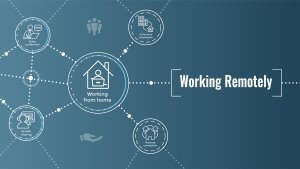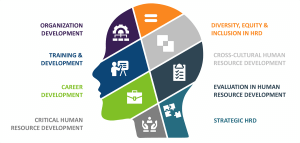Flex Forward: Driving the Future of Workplace Flexibility
The COVID-19 pandemic accelerated the shift towards flexible work arrangements, with many employees working from home out of necessity. As we move into a post-pandemic world, workplace flexibility remains in high demand.
Employees crave autonomy over when and where they work. However, with this flexibility comes new challenges around maintaining productivity, collaboration, innovation, and company culture. Successfully driving the future of workplace flexibility requires thoughtful policies and strategies to support both employee needs and organizational goals.
Defining the New Flexibility
Flexible work encompasses arrangements like remote work, hybrid schedules, compressed work weeks, and flexible hours. The key is empowering employees with options, within the context of business needs. While some roles require on-site presence, many knowledge worker positions can successfully operate with a flexible approach.
Rather than dictating set policies, smart companies are involving employees in co-creating new norms around when and where work happens. They recognize flexibility is not one-size-fits-all. Collaborative teams may need more overlapping in-office time. Working parents may need flexibility during school pickup hours. Employees should be given a voice in when and how often they come into a central workplace.
Optimizing Collaboration
Enabling team connection is vital. With employees dispersed, intentional effort is required to facilitate collaboration and innovation. Frequent team touchpoints, all-hands meetings, social events, and periodic in-person workshops can help.
It’s also important to provide digital tools for information sharing, brainstorming, and team bonding. Enterprise social networks, video conferencing, digital whiteboards, and team chat apps empower teams to engage and align despite physical distance. Training managers to lead remote teams is equally critical.
Rethinking Performance Management
Flexible work calls for a results-oriented approach rather than a face-time-focused performance approach. Output should be evaluated over set hours in an office. Managers should set clear goals and success metrics, while checking in regularly via one-on-ones.
Surveys show employees want flexibility along with connection to purpose and impact. Providing transparency into team and company objectives, while empowering people with ownership over work, satisfies these needs.
360-degree feedback mechanisms, skills coaching, and learning programs further support development in a distributed environment.
Measuring Impact
To refine flexible work strategies over time, companies must gather data and feedback. Pulse surveys, focus groups, and exit interviews provide insights into what’s working and what’s not.
Metrics around productivity, collaboration, innovation, retention and other success factors should be tracked. Insights should inform policy changes, training programs, manager coaching, and other improvements.
To gather comprehensive data, organizations should consider implementing an employee engagement survey solution that provides actionable insights into the employee experience with flexible work.
Maintaining Culture and Connection
With fewer in-person interactions, conveying culture becomes more challenging. Companies must be proactive in nurturing community and connection. Leadership should frequently communicate vision, values, and wins to unite the organization.
Shared rituals like all-hands meetings, town halls, learning sessions, and social events should blend virtual and in-person participation. Digital employee communities create space for bonding over common interests and social causes.
Offering Hybrid Support
Employees working remotely or in hybrid models need parity of technology tools, resources, and support. Equipment budgets should facilitate home office setups. Learning platforms should enable self-service access to training content.
IT support and services must seamlessly extend to off-site users. HR should guide expectations, communication norms, and self-care. Hybrid and remote workers should never feel like second-class citizens.
Conclusion
Workplace flexibility is here to stay. Done right, it can boost employee engagement, retention, and productivity. By taking a thoughtful approach to policies, culture, technology, and management, HR leaders can build a flexible framework tailored to their organization’s needs and goals. The future is flexible for both employees and employers who are willing to lean into this new world of work.
























